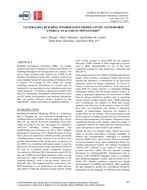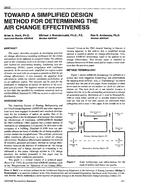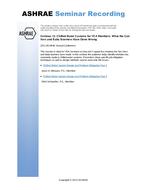In order to reduce engine emissions and fuel consumption, significant attention has been given to technologies that exploit waste heat and improve overall energy efficiency. In this paper, an adsorption cooling system using waste heat from diesel engines is proposed to provide cooling for heavy-duty vehicles. The system has a condenser, an evaporator and two adsorbers which operate alternatively between the adsorption phase and the desorption phase. The adsorber at the adsorption phase adsorbs refrigerant from the evaporator to generate cooling and the other one in the desorption process – provides refrigerant vapor to the condenser. The heat sources from the engine to drive the adsorption cycle can be either the coolant in the exhaust recirculation cooler or exhaust gas at the tailpipe, resulting in different desorption temperature available for the system. A model of an adsorption system using the zeolite-water working pair and powered by exhaust gas at the tailpipe is developed to simulate the transient performance. The results show that a large variation of temperature and heat transfer rate exists in the adsorber during each portion of the periodic operation. This result can provide design guidance to the optimization of system operation. Three operating conditions of the system are studied to demonstrate the amount of waste heat required to drive the system and the corresponding cooling capacity available under the conditions of various ambient temperatures or required temperatures of the cab being cooled. Alternative working pairs for this system and the potential to apply it to the heavy-duty vehicle market are also discussed.
Citation: ASHRAE Conference Papers, 2010, vol. 116, pt. 2, Albuquerque, NM
Product Details
- Published:
- 2010
- Number of Pages:
- 10
- File Size:
- 1 file , 900 KB
- Product Code(s):
- D-AB-10-C032


